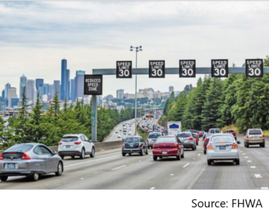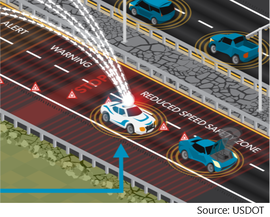
TSMO often supports, impacts, or otherwise relates to other State and local transportation agency functions and offices such as design, maintenance, and safety. TSMO and these other disciplines can be carried out more effectively if the connections between these areas are strengthened. The Federal Highway Administration (FHWA) released nine fact sheets to provide context for these potential connections and explain how TSMO relates to: Asset Management, Construction, Design, Environment, Human Resources, Maintenance, Performance Management, Planning, and Safety.
|
|

Smart communities are considered "connected" because of the extensive information networks and communications protocols that allow entities to capture and share data. TSMO can leverage these arrangements and provide a framework for expanded integration with other entities. This primer describes the key characteristics of smart, connected communities; how they can benefit from closer collaboration with TSMO; and how TSMO can benefit from these collaborations.
|
|

March 19, 3:00 - 4:30 PM ET — The increasing availability of data, analytics, and connectivity can enhance the safety and situational awareness of responders to highway and traffic incidents. I2R uses information available through the emerging digital infrastructure, technology, and applications to push warnings and information to responders. Participants will learn what I2R is, gain an enhanced awareness of new and emerging technology for transportation incident responder safety, and develop support for information sharing across disciplines in traffic incident management.
|
|
 From the Archives:
This webinar described updates included in the 5th edition of the Model Minimum Uniform Crash Criteria and how the FHWA is working with States to advance data collection. The webinar featured two agencies that actively collect and analyze data and discuss how they derive value from the data to improve TIM and responder safety.
|
|